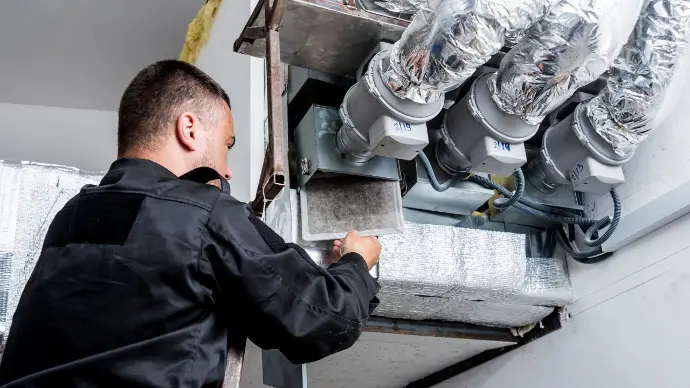The concept of Heating, Ventilation, and Air Conditioning (HVAC) is not merely about controlling the room's temperature. It's a sophisticated system that ensures your indoor environment is healthy, comfortable, and cost-effective. If you've ever wondered how HVAC systems manage to keep your living or working space so comfortable, dive in to understand their basic working principles. In this article we will talk about HVAC working principle to understand HVAC better.
1. Heating
The primary purpose of HVAC's heating element is to provide warmth to a building, especially during cold months. This is typically achieved through boilers, furnaces, or heat pumps. These devices generate heat, which is then distributed through the building using a network of pipes or ducts.
Working Principle: When you set your thermostat to a desired temperature, the heater gets activated once the room temperature goes below the set limit. Furnaces use fuel combustion, where natural gas or oil is burned to produce heat. Heat pumps, on the other hand, extract warmth from the outside air, even in cold conditions, and amplify it for indoor use.
2. Ventilation
Ventilation is the process that replaces or exchanges air within a space to provide better indoor air quality. It helps remove moisture, unpleasant odors, smoke, dust, airborne bacteria, carbon dioxide, and other pollutants.
Working Principle: There are two types of ventilation: mechanical (or forced) and natural ventilation. Mechanical ventilation involves using fans and ducts to force out stale air and bring in fresh air. Natural ventilation is based on architectural design where strategic openings (like windows and vents) allow fresh air to enter and replace stale air.
3. Air Conditioning
Air conditioning systems are used to remove heat and humidity from the indoor space, providing a cooler environment.
Working Principle: Air conditioners use a set of coils filled with a refrigerant, which changes from a liquid state to a gaseous state, absorbing heat in the process. This absorbed heat is then expelled out of the system, resulting in a cooler indoor atmosphere.
Also read: HVAC Contractors in Riyadh
Optimizing for Efficiency and Sustainability

HVAC systems can consume a significant amount of energy, so understanding optimization techniques is vital for both the environment and your wallet.
Also read: MEP Contractors in Riyadh
Regular Maintenance: Ensure your system is checked at least once a year. Clean filters, inspect ducts for leaks, and check for any malfunctions.
Smart Thermostats: Invest in programmable thermostats. They adjust heating and cooling based on your needs, ensuring energy isn’t wasted when you're not home.
Seal and Insulate: Proper insulation and sealing prevent the external environment from affecting indoor temperatures, thereby reducing the workload on your HVAC system.
Conclusion
HVAC systems, being the heart of indoor comfort, operate on simple yet effective principles. However, their efficiency can be compromised if not maintained and optimized properly. With a deeper understanding of how HVAC systems work, one can make informed choices about system upgrades, maintenance schedules, and energy-saving habits. This not only ensures a comfortable living space but also contributes to a sustainable future.
Understanding HVAC: Working Principles and Optimization